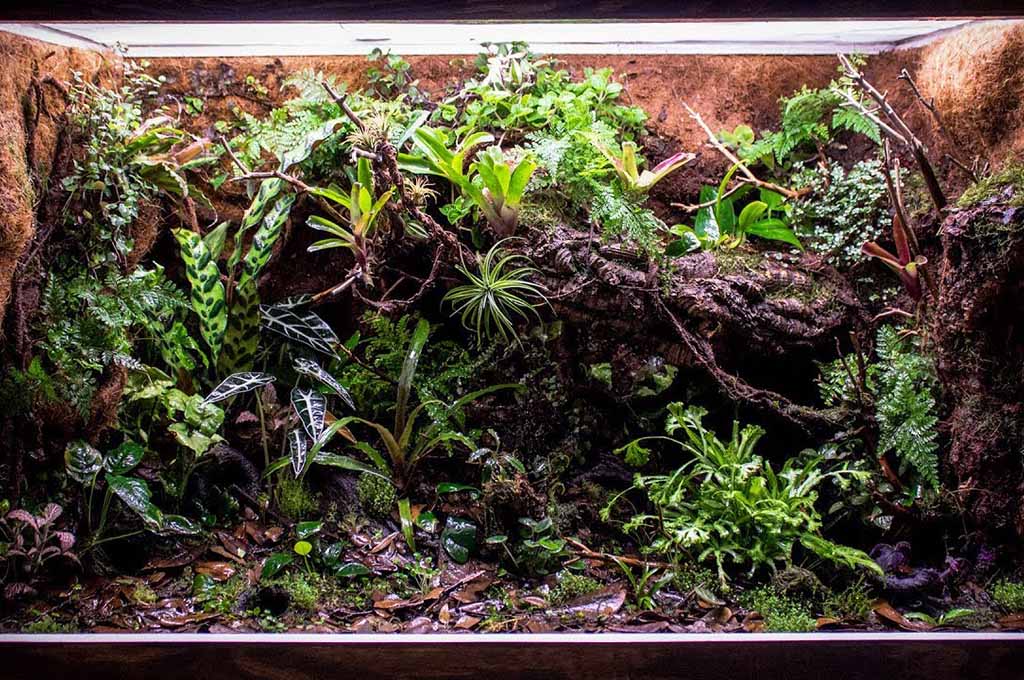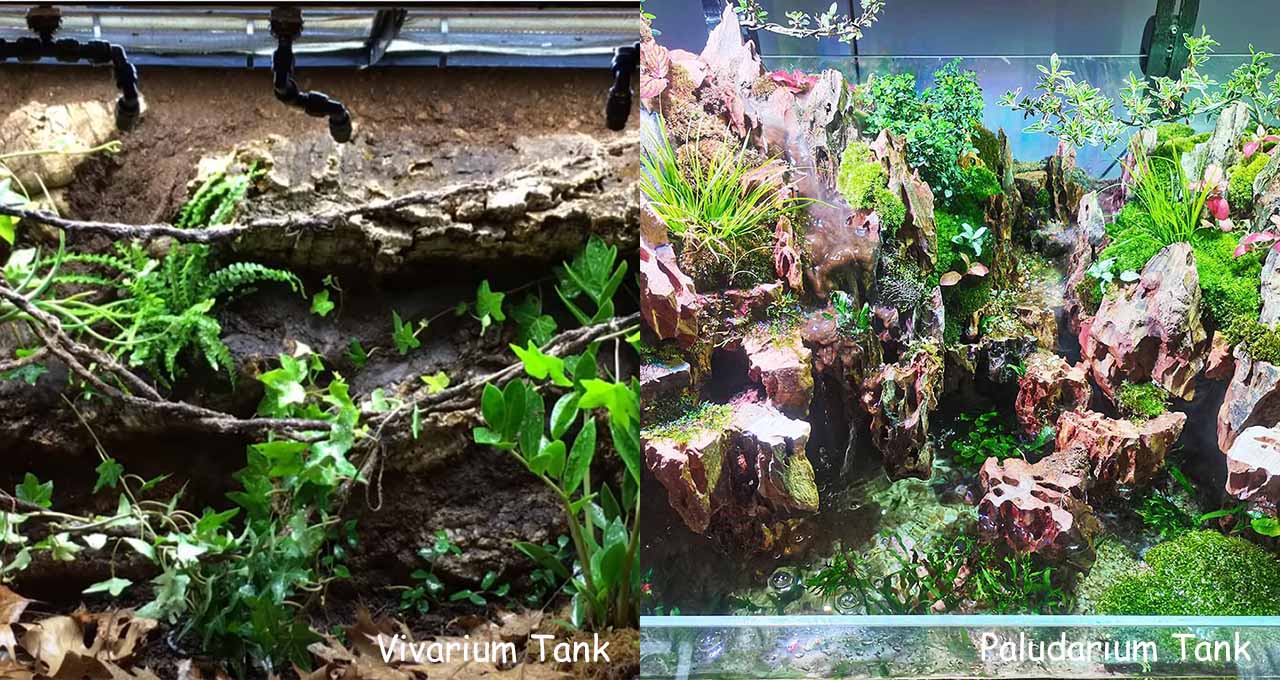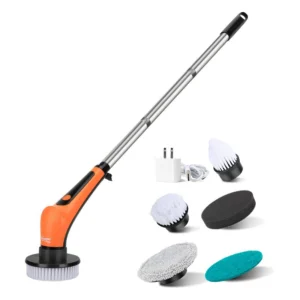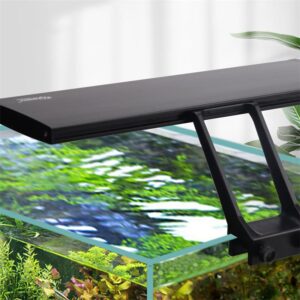Nature attracts, and you can capitalize on it. You can recreate your desired natural aspect with a vivarium tank. This article will tell you all about what a vivarium tank and different types of vivarium tanks are also part of the discussion. Moreover, a quick comparison between a vivarium and a paludarium is also the subject of this article. At the end, you’ll also learn about its cleaning.
Content Table

Vivarium tank
What Is a Vivarium Tank?
It’s a container that exhibits a part of a natural and stable ecosystem. It houses all aspects of that part of the ecosystem, i.e., water, plants, pets, environmental conditions, etc. Simply a controlled miniature part of an ecosystem.
Its size varies from the table to the macro level, i.e., Oracle’s Biosphere 2. They are used as a research facility. However, they can also serve as display or pet-keeping facilities. Unlike other enclosures, it’s closer to reality and easy to keep.
Why Is It Called a Vivarium?
Indeed, its name describes what it is. Its root has two Latin words, i.e., “vivus” and “arium”. Vivus means “alive or living”, and arium means “a place”, which means “a place for living things”, as it provides a liveable habitat to living animals and plants.
Types of Vivarium Tank
There are mainly 4 types of vivarium, i.e., aquarium, terrarium, paludarium, and riparium. However, other than these four types, there are other famous types. Here is a brief introduction to all these types of vivarium tanks.
Aquarium
The aquarium is among the most common types of vivarium tanks. They support aquatic life, i.e., fish, jellyfish, aquatic plants, and other marine living things. They can be divided into saltwater and freshwater aquariums.
Terrarium
Terrarium originated from two Latin words, i.e., “Terra” and “rium”. “Terra” means earth or land, and “rium” means a place. A terrarium displays the ecosystem of terrestrial plants and land-dwelling animals, i.e., reptiles, amphibians, and other invertebrates. Choosing from the top 10 best terrarium plants helps you build terrariums swiftly.
Paludarium
A tank that has both water and land is known as paludarium. You can also call it a combination of aquarium and terrarium. It houses amphibians and reptiles.
Riparium
It replicates the ecosystem of the river and streams ridges and supports semiaquatic plants and animals. It’s marshy and has high water areas in it.
Some Other Types
| Types | Housing facility for |
| Insectarium | Living facility to support insects and arthropods |
| Formicarium | A facility to keep the colonial ants. |
| Herpetarium | It supports reptiles and amphibians, i.e., snakes, crocodiles |
| Forest Vivarium | It depicts a jungle environment. Dense foliage, high humidity, etc., are properties of such a system. |
| Desert Vivarium | It creates a desert ecosystem. Notable properties of this system are low humidity, a house of reptiles and succulents, rock or sand substrates, etc. |

Types of vivarium tank
Should It Clean a Vivarium?
Cleaning a vivarium is among the most important aspects of having a vivarium. Daily cleaning avoids foul smells and eliminates the time between deep cleaning. Here are some daily cleaning aspects.
Water Quality
If your vivarium has a water area, i.e., paludarium, riparium, etc., check the water. Maintain a desired water level. Clean the drinking water dish. If you find any food leftover, debris, or waste in clean water, clean it immediately. Use a net or siphon for cleaning.
Spot Cleaning
Vivarium pets are not civilized like humans. Therefore, you need to clean the face and shed skin of your pets regularly. You can do it with your hand, or long tweezer, or a scoop. While removing the feces, also remove some substrate behind it, as urine soaks into the substrate. However, if you have a burrowing pet, it’ll be cleaned with deep cleaning.
Food Cleaning
Leftover food can be a house of bacteria, which leads to stress, unusual behavior, and illness in your pet. Therefore, it’s necessary to clean the food leftover daily.
Filtration System
Check the filtration system for water-based vivarium tanks, i.e., aquariums, paludariums, etc. Ensure that it’s operating at optimal conditions. If it is clogged or requires cleaning, immediately clean it according to the manufacturer’s instructions.
Plant Inspection
Unhealthy plants lead to pet sickness. Therefore, if you see any parasite-affected plant, replace it with a healthy plant. Remove shed leaves from bedding.
Inhabitant Inspection
Daily check the pet’s behavior; if you feel any unusual or lazy behavior, pay attention and talk to your vet in case of an emergency.
Some other tips
- Ensure the proper ventilation in the tank.
- Clean the wall glass for better observation. Never use soap and chemical cleaners, as they can harm your terrarium

Vivarium vs Paludarium
Vivarium vs Paludarium
| Vivarium | Paludarium |
| Its humidity varies for the pets, i.e., low, medium, or high. | Its humidity is always high. |
| It heavily relies on tools to create a perfect environment. | It is usually natural resources, i.e., plants, water-bodies, etc., and artificial aspects to create a perfect environment. |
| Dominated land area. | Dominated water area. |
| Temperature strict design. | Humidity strict design. |
| Terrestrial plants, i.e., usually tropical. | Terrestrial and aquatic plants. |
| Higher maintenance | Lower maintenance |
| Focus on pets | Focus on the natural environment |
| It houses terrestrial animals, i.e., reptiles, insects, or invertebrates. | It houses amphibians, fish, some reptiles, and semi-aquatic invertebrates |
| It is used to replicate rainforests, deserts, and arid regions. | It helps to create mangroves, rainforests with streams, swamps, and wetlands. |
Conclusion
A vivarium tank is a miniature form of any part of the natural ecosystem that ranges from desk size to acres. Vivarium types include aquariums, paludariums, terrariums, and many other tanks. Generally, a vivarium exhibits land features, and a paludarium exhibits a combination of land and water areas.
For long-term maintenance, focus on daily maintenance aspects. It includes proper cleaning, i.e., spot cleaning, leftover food cleaning, plant cleaning, etc. Follow all these aspects for having the best vivarium tanks.


Leave a comment